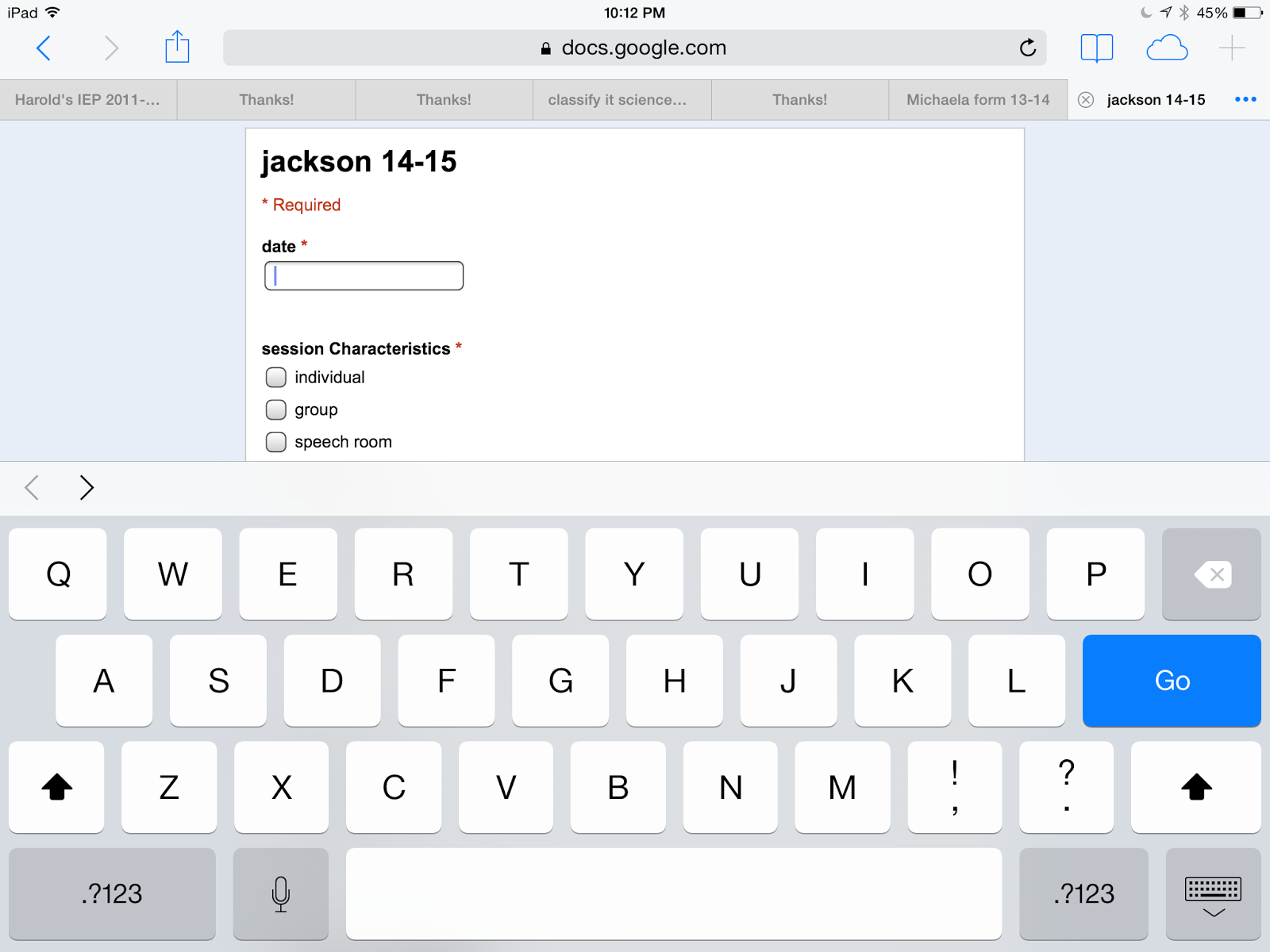Handwriting is going by the wayside! I have terrible handwriting, but when I type or dictate, my notes are detailed and organized (and Medicaid compliant).
How do we set up notes for dictation? First, make sure Siri is enabled on your iPad or iPhone.
1. Create Google forms for each student. Google forms can have specific questions geared to your students' IEPs. I also have a place on each form for a synopsis of the therapy session. Tutorial for this is here.
2. Add the child's Google form to your home screen on your iPhone or iPad. Keep in mind that you need to have an Apple gadget that is more recent than an iPad 1 or 2. A tutorial for adding the Google form to the home screen is here.
3. Then dictate your notes! When you open the form, touch a cell. The keyboard will open, and you will see a microphone icon in the bottom row. Touch that, and talk......slowly.
Play with it, and find the lingo that Siri will recognize (although I'm totally amazed at how well Siri recognizes what I say). Complicated names are hard, so you will want to proofread and edit a bit. It's faster than handwriting, and looks great on a spreadsheet. I use it a lot....with my door closed. When people walk by my room, they may think I've lost it when they see I'm talking to my iPad.
Perhaps it seems like a lot of work frontloaded? I find that this saves so much time in the long run that the time is well spent.
I want to thank my Chapel Hill colleagues who enlightened me about Siri and voice-to-text dictation.
I'm sure there is something similar for Android devices. This will be a later blog topic.


No comments:
Post a Comment
Note: Only a member of this blog may post a comment.